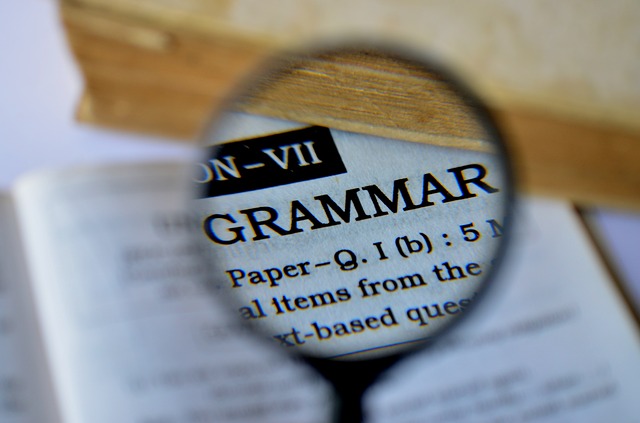Grammar Spotlight
 The English Grammar Profile (EGP) is a sister resource to the English Vocabulary Profile, and has been put together by Anne O'Keeffe (Limerick University) and Geraldine Mark, the co-authors, along with Ron Carter and Mike McCarthy, of English Grammar Today (Cambridge University Press). Mark and O'Keeffe investigated the extensive data in the Cambridge Learner Corpus to establish when learners begin to get to grips with different linguistic structures.
The English Grammar Profile (EGP) is a sister resource to the English Vocabulary Profile, and has been put together by Anne O'Keeffe (Limerick University) and Geraldine Mark, the co-authors, along with Ron Carter and Mike McCarthy, of English Grammar Today (Cambridge University Press). Mark and O'Keeffe investigated the extensive data in the Cambridge Learner Corpus to establish when learners begin to get to grips with different linguistic structures.
A series of insights from their research will be posted on this page, each one putting the spotlight on an interesting aspect of learner grammar development. Please note that all of the learner examples come from the Cambridge Learner Corpus, a 55-million word electronic collection of written learner data. The examination and the candidate’s first language are given in brackets after each learner example.
See the latest Grammar Spotlight entry below. Scroll right down to the bottom of this page to browse through previous entries.
At A1, the corpus evidence we currently have shows that learners can use the affirmative forms will and ‘ll in a limited way, especially when referring to plans and intentions.
 I will be at your house at 7.30 because I have an appointment before. (Skills for life entrance level 1; Russian)
I will be at your house at 7.30 because I have an appointment before. (Skills for life entrance level 1; Russian)
 I'll see you tomorrow. (Skills for life entrance level 1; Polish)
I'll see you tomorrow. (Skills for life entrance level 1; Polish)
At A2 level, what learners are typically capable of is noticeably broader in scope.
For example, A2 learners use:
- The present continuous to talk about arrangements and ask about future plans
 I'm working this Saturday and Sunday morning. (Key English Test; Spanish)
I'm working this Saturday and Sunday morning. (Key English Test; Spanish)
 Where are you going? (Key English Test; Tagalog)
Where are you going? (Key English Test; Tagalog)
- The present simple to talk about timetabled events in the future
 The class is on Monday. It starts at 6:00 pm and finishes at 7:00 pm. (Key English Test; Spanish)
The class is on Monday. It starts at 6:00 pm and finishes at 7:00 pm. (Key English Test; Spanish)
- Be going to to talk or ask about plans and intentions, as well as making predictions
 We are going to take a taxi to get to the sports centre. (Key English Test; Portuguese)
We are going to take a taxi to get to the sports centre. (Key English Test; Portuguese)
 What are you going to wear? (Key English Test; Italian)
What are you going to wear? (Key English Test; Italian)
 It's going to be fantastic. (Key English Test; Spanish)
It's going to be fantastic. (Key English Test; Spanish)
- The future simple will to express willingness, make requests, and ask about plans and intentions
 My mother will get us there, and she will bring us to my house afterwards too. (A2; Portuguese)
My mother will get us there, and she will bring us to my house afterwards too. (A2; Portuguese)
 Will you come with me? (Key English Test; Telugu)
Will you come with me? (Key English Test; Telugu)
 Will you come with any friends? (Key English Test; Basque)
Will you come with any friends? (Key English Test; Basque)
- The future simple shall to make suggestions or offers
 Shall we go to a Korean restaurant after the film? (Key English Test; Korean)
Shall we go to a Korean restaurant after the film? (Key English Test; Korean)
 Shall I go and buy some cake and crackers? (Key English Test; Bulgarian)
Shall I go and buy some cake and crackers? (Key English Test; Bulgarian)
So by A2 level, learners seem to have a number of ways of expressing the future at their disposal. Of course, they sometimes make mistakes when producing these forms, but our data shows that significant numbers of learners are able to produce accurate and natural uses, as illustrated by the examples above.
One surprising piece of evidence that has emerged from our research at the A2 level is early use of the future continuous. This structure is not normally taught until the B levels and yet learners appear to be able to produce it successfully within limited contexts of time and place, as in these examples:
 I'll be waiting for you. (Key English Test; Portuguese)
I'll be waiting for you. (Key English Test; Portuguese)
 We will be starting at 12 o'clock this afternoon. (Key English Test; Chinese)
We will be starting at 12 o'clock this afternoon. (Key English Test; Chinese)
These examples are very natural, and suggest that it might perhaps be a good idea to cover simple uses of the future continuous earlier in an English course? Teaching could be restricted to immediately useful collocations such as the ones illustrated. It is likely that learners would in any case be exposed to the future continuous in the classroom when, for example, the teacher mentions what the class will be doing in next week’s lessons.






